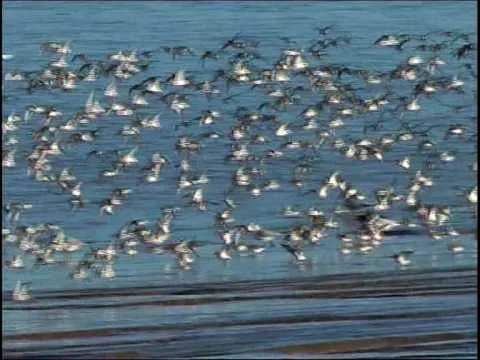https://www.youtube.com/watch?v=3jv0ARETTbM
Chapel Rock was once the home of Tecla, a princess of Gwynedd who retired there as a hermit before being murdered by raiders from the sea. It is now allegedly haunted.
A chapel dedicated to St Twrog was later built on the rock but was ruined before the 18th century, a small modern lighthouse now stands adjacent to the ruins.
https://www.youtube.com/watch?v=tm25jpUl7kI
The Rusting Severn Princess Ferry - River Wye Chepstow
https://www.youtube.com/watch?v=RaxbDalWI3I
#pRivSv River Severn Estuary - Extreme Spring Tides- Lydney Wellhouse Rock X6 & real time
https://www.youtube.com/watch?v=olNxez5zg8k
River Severn - Extreme Tides Bores & Spring Tide Floods
https://www.youtube.com/watch?v=njY2oOCATR8
Intertidal mudflats and sandflats are submerged at high tide and exposed at low tide. They form a major component of estuaries and large shallow inlets and bays in the UK but also occur extensively along the open coast and in lagoonal inlets. The physical structure of the intertidal flats ranges from mobile, coarse-sand beaches on wave-exposed coasts to stable, fine-sediment mudflats in estuaries and other marine inlets. This habitat type can be divided into three broad categories- clean sands, muddy sands and muds – although in practice there is a continuous gradation between them. Within this range, the flora and faunal communities vary according to the type of sediment, its stability and the salinity of the water. #pRivSv
The intertidal part of the Severn Estuary supports extensive mudflats and sandflats. These cover an area of approximately 20,300 ha – the fourth largest area in a UK estuary. It represents approximately 7% of the total UK resource of intertidal mudflats and sandflats and approximately 10% of the UK Natura 2000 resource, by area. There are extensive mudflats fronting the Welsh shore and Bridgwater Bay, and large banks of clean sands in the more central parts of the Estuary at Middle and Welsh Grounds.
The high biomass of invertebrates in the mudflats of the Severn provide an important food source for a diverse range and large number of fish and benthic predators. These intertidal areas are therefore important in supporting the fish assemblage sub-feature of the SAC and Ramsar Site.
Mudflats also provide a valuable feeding, roosting and resting area for a wide range of species of wading birds and waterfowl and are therefore important supporting habitats for the wintering and passage bird features of the SPA and Ramsar Site. The type of sediment, its stability and the salinity of the water have a large influence on the wildlife species present.
https://www.asera.org.uk/features/habitats-2/intertidal-mud-sand-flats/
..........
Over 80 species of fish have been recorded in the Severn Estuary. These include several migratory species such as salmon, sea trout, sea and river lampreys and in particular the UK priority species, allis and twaite shad. The estuary supports internationally important wildfowl and wader populations, in particular resident shelduck, winering dunlin, white-fronted goose, gadwall, and redshank, and Bewick’s swan, and provides a key staging ground during migration for species such as ringed plover and whimbrel.
The saltmarshes support significant populations of nationally scarce plant species including slender hare’s-ear, sea clover and bulbous foxtail, and are used for feeding by ducks and roosting by waders. Maritime cliffs, such as those found at Steepholm, Middlehope, Battery Point, Aust and between Clevedon and Portishead, contribute to the habitat diversity and provide roosting areas for birds, including nesting peregrines. A number of sites along the estuary are of national importance for their geology, including the Aust cliffs. There are several extensive Sabellaria reefs offshore which provide habitat for a wide diversity of invertebrates.
http://www.avonwildlifetrust.org.uk/what-we-do/we-create-living-landscapes-living-seas/severn-estuary
http://www.avonwildlifetrust.org.uk/wildlife/species-a-z
Intertidal Mudflats
Macoma balthica, Cersatoder ma edule, Retusa obtusa,
Hydrobia ulvae, Scrobiculari a plana
Subtidal Mobile Sandbank
Venus spp. (e.g.striatula), Fabulina fabula, Dosinia lupinus, Gari fervensis, Abra prismatica, Ensis ensis, Spisula spp.
http://www.ukmarinesac.org.uk/pdfs/sandmud.pdf
Winkles & Limpets
https://www.youtube.com/watch?v=DemRJlxXA1I
Shellfish UK !
https://www.youtube.com/watch?v=AN5OZn7M318
https://www.asera.org.uk/features/habitats-2/intertidal-mud-sand-flats/
https://naturalhistory.museumwales.ac.uk/britishbivalves/browserecord.php?-recid=58
http://www.marinespecies.org/aphia.php?p=taxdetails&id=141436
https://naturalhistory.museumwales.ac.uk/BritishBivalves/recordlist.php?-max=100&-skip=0&-sortfieldone=British%20Bivalve::Superfamily&-sortorderone=ascend&-sortfieldtwo=British%20Bivalve::Family&-sortordertwo=ascend&-sortfieldthree=British%20Bivalve::ScientificName&-sortorderthree=ascend
https://www.youtube.com/watch?v=qRbkZlsw_KE
https://en.wikipedia.org/wiki/Severn_Estuary



